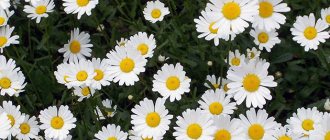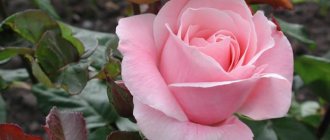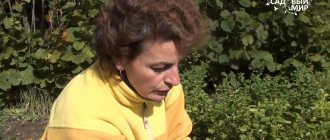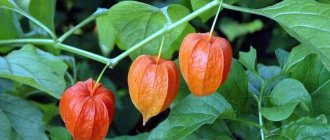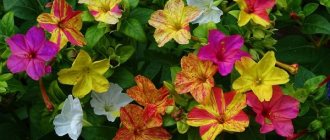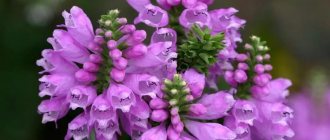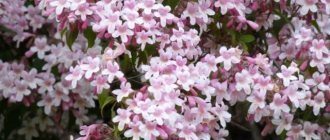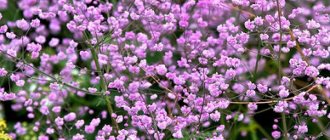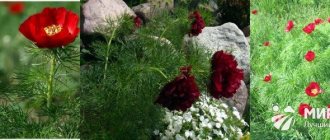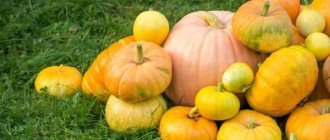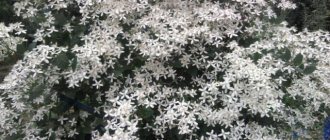admin 11/05/2017 1,648 Views
Luxurious racemose inflorescences of penstemons will decorate your garden from the beginning of summer until the first autumn frosts. These profusely flowering plants are mostly evergreen perennials and subshrubs. In terms of their habit, they vary from miniature cushions, common in the highlands, ideal for rock gardens, to large upright bushy forms that look good in borders and on ridges. The smallest species are best grown in raised beds. Relatively compact varieties feel great in tubs. Alpine penstemons bloom from early to mid-summer, and bedding penstemons from early summer to early autumn.
Penstemon
The flowers are tubular, about 2.5 cm long, mostly blue, purple or red. They are collected in racemose inflorescences. The five lobes of the corolla form a bilabial limb. The pharynx is often bearded (hairy). The leaves are green, usually lanceolate, opposite, 2.5-15 cm long. They may fall off in cold winters, although the plants are, in principle, evergreen. Some species are short-lived and difficult to grow. Most varieties are heat-loving and die in frosts, so in central Russia they are grown as annuals and cuttings are taken in a timely manner.
The homeland of penstemons is North and Central America. The plants discussed below belong to two garden groups: alpine and border.
Content
- General information
- Penstemon varieties and types of photos with names
- Penstemon planting and care in open ground
- Watering penstemon
- Soil for penstemon
- Penstemon transplant
- Penstemon fertilizer
- Penstemon flowering
- Penstemon pruning
- Preparing penstemon for winter
- Penstemon growing from seeds
- Penstemon propagation by cuttings
- Penstemon propagation by layering
- Penstemon propagation by dividing the bush
- Diseases and pests
- Conclusion
Species diversity
Despite the fact that the culture has many species, only a few are most widespread.
Hartweg's Penstemon
The species is characterized by erect stems growing up to 70 cm, with long and narrow leaves. Large, up to 4 cm in length, flowers are similar to snapdragons, painted in bright red, purple colors with a white coating inside a tubular bell. Flowering lasts all summer and early autumn. It is preferable to grow Hartweg's penstemon by seeds, sowing in March at home or in a greenhouse when the soil warms up. It is an annual species, but can overwinter under cover at temperatures down to -21°.
Penstemon Hartweg chanson
Hartwega chanson is a hybrid of Hartweg's penstemon, grown from seeds. The stems grow up to 70cm, the flowers are painted in bright pink-purple and lilac shades. Blooms for a long time - July-October.
Penstemon sensation
This is a hybrid form of penstemon, an annual, grows up to 45cm. Long, two-color flowers are collected in paniculate inflorescences. Looks impressive in group plantings along with other flowering crops. Sensation does not tolerate temperatures below 0°. Compositions of low hybrids with tall flowering crops and evergreen shrubs create bright, variegated zones on the territory.
Penstemon bearded
It grows naturally in the western regions of North America. The peculiarity of the plant is its small, 2.5 cm, scarlet flowers with yellow hairs on the lower lip - hence the name “bearded”. The stem grows up to 90cm, with pairs of leaves at the nodes. Flowering begins in May or June and lasts almost 2 months. Withstands frosts down to -34°C. It is a perennial species and looks ideal in hedges along borders and lawns.
Penstemon rubra
The stem is tall, up to 70 cm, the flowers are tubular, lilac, red, pink, burgundy shades are collected in loose inflorescences. The leaves are narrow, long, with sharp teeth. Grown from seeds as an annual. Rubra mixture is an excellent option for decorating evergreens.
Penstemon Love Formula
Rarely grown variety, flowers of delicate light shades with a corolla inside. The stem is spreading, tall, densely covered with flowers. The name “Formula of Love” reflects the light colors of the flowers.
General information
The Latin name of the plant translated into Russian sounds like “almost a stamen.” Due to the fact that the flower has one sterile stamen of a bizarre shape, protruding far beyond the petals, and in England penstemon is called “bearded tongue”, due to this feature.
This crop is still rare for our gardens. But due to its brightness and unusual appearance, they are beginning to grow it in our climate zone. The plant blooms in early June and flowering lasts for two to three months. It is not difficult to grow it, the main thing is to follow the advice of experienced gardeners and then the plant will delight you with its bright flowers every spring.
Features of Penstemon
From Latin the name “penstemon” is translated as “almost a stamen.” The fact is that the flower of this plant has only one unusually shaped stamen, it is sterile and very long, due to which it protrudes far beyond the petals. The British call this plant “bearded tongue”. In mid-latitudes, gardeners rarely grow such a flower. But every year the popularity of this crop is growing, thanks to its unusual shape, long flowering and beautiful foliage. Flowers appear on the bushes in the first days of June, and the duration of flowering can vary from 2 to 3 months. Growing such a crop in your garden is quite simple, but this is only if you choose a suitable site for it and provide it with proper care.
Penstemon varieties and types of photos with names
Penstemon Perennial is a herbaceous bushing perennial with straight stems and lanceolate dark green leaf blades. The height of the crop reaches 1.2 meters. Flowers can be either tubular or bell-shaped. They are collected in paniculate inflorescences, having white, red, lilac, pinkish and other colors. The plant blooms from early to late summer.
Penstemon Foxglove - the culture reaches a height of up to 1 meter. The inflorescences are large, light pink. The plant blooms at the beginning of summer and lasts for a month. The variety is frost-resistant and can withstand winter without insulation.
Penstemon Bearded - this variety is characterized by abundant and early flowering. The height of the bush reaches up to 90 centimeters. The inflorescences have an unusual color - they are white on the inside and scarlet on the outside. Flowering time begins in May and lasts until the end of July.
Penstemon Dark Towers is a plant developed relatively recently. It is characterized by frost resistance and abundant flowering. The leaf blades are dark burgundy, lanceolate in shape. Pale pink flowers are collected in paniculate inflorescences. The culture reaches a height of up to 70 centimeters and blooms throughout the summer.
Penstemon Carillo Red - the height of the crop reaches 60 centimeters. The leaf blades are bright green and lanceolate in shape. The stems are thin and woody. Inflorescences are paniculate, purple in color. This variety blooms from July to October.
Hartweg's Penstemon
Externally, the variety resembles the snapdragon flower. The plant reaches a height of up to 70 centimeters. The inflorescences are large, collected in unusual racemes. Shades of flowers can be white-scarlet, orange, red and purple. Flowering time lasts from mid-summer until the first frost.
Davidson's penstemon is a low-growing herbaceous perennial, reaching a height of up to 30 centimeters. The leaf blades are medium-sized, lanceolate, green. The inflorescences are small and lilac in color. The plant blooms from early summer to mid-autumn.
Penstemon Mystic - the plant reaches a height of up to 70 centimeters and has dark burgundy leaves and stems. The inflorescences are white, racemose with a pleasant aroma. The crop blooms from June to the end of August.
Penstemon Bell-shaped - the stems of the plant reach a height of up to 90 centimeters. The flowers are small, resembling bells of a pinkish-lilac hue. The leaf blades are lanceolate in shape and light green in color. The plant blooms from June to September.
Penstemon Husker Red - a herbaceous perennial reaching a height of 70 centimeters. The leaf blades are lanceolate, green-brown in color. The inflorescences are whitish-pink, racemose. Flowering time lasts from May to October.
Penstemon Hybrid
It is a spectacular annual, reaching a height of up to 80 centimeters. The leaf blades are dark green, lanceolate with a sharp tip. The flowers are small, bell-shaped, blue and light purple. The culture blooms from June to September.
Penstemon coarse -haired is a low-growing, bushy perennial, reaching a height of up to 30 centimeters. The leaves are dark green, lanceolate with slight pubescence. The flowers are small, resembling a purple bell in appearance. The flowering time of the plant is in summer.
Penstemon Sensation - the variety is short-growing and reaches a height of up to 45 centimeters. The leaves are dark green with a sharp tip. The inflorescences are racemose, long, bicolor, white-blue or white-red. The culture blooms from July to September.
Penstemon Rubra is a bushy perennial that reaches up to 70 centimeters in height. The leaves are dark green, medium-sized with a pointed end. The inflorescences are large, bicolor white-red, white-pink and white-burgundy. The crop blooms throughout the summer.
Penstemon Pygmy is a low-growing variety, reaching a height of up to 20 centimeters. The bush has lush, dark green foliage and pubescent, lanceolate leaf blades. Racemose inflorescences of a pale lavender hue. Flowering time is from June to August.
Penstemon Kobo
The plant has large light green leaf blades with a sharp end and tall stems reaching 120 centimeters. The inflorescences are large, racemose. They are white, white-pink, white-violet, white-red and white-purple.
Penstemon Redleaf - a perennial crop reaches a height of up to 70 centimeters and has large leaf plates with a pointed end of a dark burgundy hue. The inflorescences are bell-shaped in white, pink, purple and red. The flowering time of the plant is in the summer.
Penstemon alpine is a low-growing plant with long, narrow leaf blades of a dark olive hue. The inflorescences are dense, reminiscent of snapdragons, of a rich sky blue color. The flowering time of penstemon falls in June and lasts until September.
Penstemon Darkleaf - This variety of penstemon reaches a height of up to 60 centimeters and has dark burgundy leaf blades with a narrow tip. The inflorescences of the culture are racemose, pinkish-white. The flowering time of the plant lasts all summer.
Penstemon Ice Cream - the crop reaches a height of up to 80 centimeters and has tall woody stems. The leaves of the plant are green, with a sharp end. The flowers are large, cream-colored, with a purple center and streaks. The plant blooms from June to September.
Penstemon Pine-leaved - the crop reaches a height of up to 30 centimeters. Stems are straight, woody, with dark green lanceolate foliage. The inflorescences are large, bright yellow, blooming luxuriantly. Penstemon flowering time lasts from June to August.
3.Varieties:
3.1.Foxglove penstemon - Penstemon digitalis
A perennial herbaceous plant 90 - 150 cm high. The leaves are green, oblong, spear-shaped, up to 15 cm long. The peduncles have small, oppositely located, lanceolate leaves with a finely toothed edge. The flowers are white, bell-shaped, about 2 cm in diameter, collected in loose inflorescences - panicles on the tops of vertical stems. On the outside, the flower petals have slight pubescence.
↑ Up,
3.2. Bearded penstemon - Penstemon barbatus
A relatively compact variety, the height of which varies from 60 to 90 cm. A perennial herbaceous plant with rigid, erect stems, abundantly branched at the base. The leaves are linear, narrow, dark green, sessile. The leaf blades are entire, slightly bent along the central vein. The flowers are tubular, collected in loose panicles, pink, coral or red, with 5 rounded, fused petals.
↑ Up,
3.3.Hartweg's Penstemon - Penstemon hartwegii
A perennial herbaceous plant up to 70–80 cm high. The stems are erect, branch abundantly at the base, and bear spear-shaped, green, glossy leaves. Very bright, attractive, bell-shaped flowers in shades of lilac, red, and pink appear at the top of the stems in early summer. The center of the flowers has a white tint.
↑ Up,
3.4.Penstemon Kobo - Penstemon cobaea
Herbaceous plants with branching vertical shoots reaching a height of 30 - 60 cm. Each bush is capable of forming 15 - 20 flower stalks. The leaves are green, spear-shaped, covered with slight pubescence. The flowers are bell-shaped, pink, lilac, purple, white.
↑ Up,
3.5. Stiff-haired penstemon - Penstemon hirsutus
Compact herbaceous perennial, reaching 40 - 60 cm in height. The stems are strong, erect, covered with slight pubescence. The leaves are green, opposite, oblong-spear-shaped, with small teeth along the edge of the leaf blades, sessile. The flowers are tubular, long, appear at the top of the shoots, lilac, white or pink. The inner surface of the petals is often colored in contrasting white.
↑ Up,
3.6. Davidson's Penstemon - Penstemon davidsonii
Low-growing, perennial, ground cover plant with lodging, creeping shoots. With age, it forms dense grassy mats. The leaves are small, succulent, broadly lanceolate or spoon-shaped, green. The flowers are pink, lilac or purple, tubular, abundantly covering the plants.
↑ Up,
Penstemon planting and care in open ground
Penstemon is a light-loving plant, for this reason the area for planting it should be chosen well lit, but drafts must be avoided. The soil for the crop should be light with good drainage.
The plant can be planted in open ground either by seedlings or by seeds. To grow seedlings, you should take a container with fertile soil and sow seeds in it in February, digging them a little into the soil and moistening the soil with a spray bottle. The seeds must be sprinkled with fried sand on top, then re-moistened, covered with film and put in a warm, sunny place for germination.
In two weeks the first young plants will begin to appear. In order for penstemon to germinate faster, the temperature in the greenhouse should be maintained at least + 20 degrees, ventilated once a day and monitor soil moisture.
When the first leaf blades appear, the young plants need to be planted in peat pots. At the end of May, the plants must be transferred to open ground, taking care of the soil and drainage in advance. It is also necessary to take into account the fact that the earlier the plants are planted in the garden, the later they will begin to bloom.
Torenia is also a member of the Norichnikov family. It can be grown with care at home without much hassle if you follow the rules of agricultural technology. You can find all the necessary recommendations in this article.
Penstemon in landscape design
Penstemon in landscape design photo
Penstemon can behave aggressively towards other plants, so if you have a small area, it is better to keep it to itself.
Penstemon with other flowers photo
By planting one type or variety of penstemon, you will get a monochromatic clearing, and combining plantings will make the flowerbed multi-colored.
Penstemon in the urban landscape photo
Penstemon looks luxurious next to juniper; orange cotton wool will be a bright addition.
Penstemon in the garden photo
Possible neighbors are daisies, astilbe, coreopsis, and decorative sedge.
Penstemon in garden design photo
Alpine penstemon is grown as a ground cover, but the best place for it will be on an alpine hill, suitable for border plantings and edging garden paths.
Penstemon in landscape design photo of flowers
Pentemon of medium height belongs in ridges and rocky gardens.
Watering penstemon
The flower needs regular watering, which is especially important if the summer is dry. However, you need to ensure that the soil has time to dry out between waterings.
To ensure that the water does not stagnate and the root system can “breathe,” when planting young trees, care should be taken for good drainage in the form of a layer of coarse sand or fine expanded clay laid at the bottom of the planting hole.
To reduce the frequency of watering, you should mulch the soil around the plants with compost or dry peat. Also, after each watering, the soil needs to be loosened and weeds pulled out.
Planting seedlings and caring for plantings
The area for growing the crop should be chosen to be illuminated; light partial shade in the afternoon is acceptable. Light, well-drained soil with a neutral or slightly acidic environment (sandy loam, loam) is suitable for planting. Heavy soil is lightened by adding sand, sawdust, and small pebbles. The soil for penstemons is prepared in the fall or 1-2 weeks before planting seedlings - they are dug up with the addition of humus or ready-made manure.
The distance between seedlings is maintained at 30-40 cm, so that in the future, as they grow, the plants do not interfere with each other.
Important! When transplanting seedlings, you should focus on the climate of the region - early planting in cold soil delays the flowering time.
The root system of penstemons does not tolerate severe waterlogging and dry soil, so it should be watered regularly - more often in hot weather, less often in cool weather.
Weeding and loosening are standard care procedures. They can be replaced by applying a layer of mulch.
The plant blooms profusely, and often dried flowers appear at the top, which should be removed. Sometimes you can cut off the entire top, which does not harm growth and flowering.
You need to feed several times during the season:
- In the spring, when planting seedlings, humus is added, i.e. nitrogen necessary for the growth of stems and leaves;
- before flowering, feed with phosphorus and potassium;
- During the flowering period, they are fertilized with complex compounds for flowering crops.
In late autumn, the stems of perennial penstemons are completely cut off and the ridge is covered with spruce branches, straw, leaves, and in the spring, if there is snow cover, snow is removed from the plantings so that moisture does not stagnate.
Penstemon transplant
To prevent the plant from losing its decorative properties, it should be replanted every five years. Usually transplantation is carried out in the spring, by bush division. For this purpose, take an adult plant, carefully dig it up and divide it into parts, trying not to damage the root system.
After this, the resulting cuttings are transferred to a new bed, not forgetting to create a drainage layer. When the plants are planted, the soil should be lightly pressed, watered and mulched. The plant's adaptation time takes about a month.
Penstemon fertilizer
The first feeding as compost is mixed into the soil when planting young animals. Organic fertilizers are applied to the bushes three times a season.
Before flowering, experienced gardeners recommend using complex mineral fertilizers with a high phosphorus content. With its help you can enhance flowering and influence the decorative characteristics of flowers.
Penstemon flowering
The plant blooms in June and can last until the end of summer or until the first frost. Everything will depend on the variety. The flowers of the culture may look like bells or snapdragons.
Mostly, the buds are collected in dense large clusters of white, pink, blue, red, purple, orange, yellow, and there are also varieties with two-color colors. After flowering, seeds begin to form, which are used for propagation of the crop.
Penstemon: plant description
The perennial has a tap-type root system. The bush consists of 1-4 erect stems that grow from 20 to 120 cm. The ribbed surface of the rounded shoots has a juicy green or dark brown color. The shiny, elongated leaves with a pointed edge have an opposite arrangement. They are collected in a basal rosette and do not have petioles.
Penstemon begins to bloom in May. Until the end of June, oblong panicles of future inflorescences with tubular corollas appear on the stems. The petals of small flowers have a characteristic slightly forked shape. Several thin stamens and ovaries peek out from the center of an oblong calyx 1.5-2.5 cm long. Each bud typically has one or more shades. The colors of the petals can be very diverse: burgundy, scarlet, blue, lilac, lilac, beige, yellow or white. The pharynx has a lighter color.
The pollinated flower, after ripening, forms a multi-seeded capsule, in the middle of which there are small, ribbed seeds. They are covered with a tough brown skin. 1 g of seed can contain approximately 10,000 units. They are able to maintain their viability for a couple of years.
Preparing penstemon for winter
Some varieties of penstemon in our climate zone are grown as perennials due to their southern origin. In preparation for winter, perennials are cut at the root and covered with a layer of dry foliage or spruce branches.
To prevent snow melting in the spring from causing the root system to become wet, the plant must be provided with good drainage when planting and the snow mass must be removed from the planting site every spring when it begins to melt.
Penstemon care
The plant is unpretentious and can adapt to different conditions, but in order to achieve beautiful flowering, you will have to take a little care to create a favorable environment.
Selecting a location
Penstemon should be planted in a place open to the sun, but where there is no draft and there is protection from gusts of wind. In addition, the site must be sufficiently dry and without low relief.
The soil
It is advisable to choose loose soil with good drainage. The preferred reaction is acidic. In heavy soils, it is recommended to add sand, sawdust or small pebbles, which will ensure aeration and timely drainage of water.
Watering
In hot summer, watering should be done every other day. You should focus on the condition of the soil layer; it should dry out well. Periodic loosening is highly desirable to provide oxygen access and prevent water stagnation.
After a snowy winter, it is recommended to remove excess snow from the area where penstemon grows so that the melted snow does not stagnate.
Top dressing
The plant is responsive to organic fertilizers. On fertilized soils it grows better and blooms more profusely. It is recommended to apply organic matter at the beginning and end of the season, and a few days before the opening of the first buds - phosphorus-based mineral fertilizer. Before planting, dig up the bed, filling it generously with compost or well-rotted manure.
Trimming
Radical autumn pruning is an essential part of caring for penstemon. It is produced after flowering ends in September. Wilted flowers should be removed immediately to stimulate new buds. In autumn, the entire above-ground part of the flower is removed almost completely, in some cases it is allowed to leave only the basal rosette (evergreen varieties).
Many varieties of Penstemon are classified as juveniles. After 3-4 years, even with competent agricultural technology, the plant begins to lose its decorative effect. The stems become elongated, the leaves become thinner, and the flowers become small and more poorly colored. Therefore, you need to take care of timely renewal of seedlings.
Wintering
The culture is quite cold-resistant, but in the region of severe contrasting winters it requires covering with spruce branches, sawdust, etc. 10-15cm thick. It should be remembered that getting wet is more destructive for this plant than frost, so care should be taken in advance to ensure that the spring melting of snow does not lead to stagnation of moisture in the flowerbed with these flowers.
Penstemon growing from seeds
The most common method of propagating penstemon is to grow the plant by seed. Seeds can be purchased at the store or collected yourself after they ripen.
If you grow penstemon from seeds, then sowing them should be done either in the fall or in the spring, when the threat of frost has subsided. Sow the seeds immediately in open ground, sprinkled with a small layer of soil.
Some species require stratification, such as alpine penstemon. To do this, they can be sown before the winter, in October-November, in open ground, but it is safer to sow them in a container, barely sprinkled with sand or soil on top.
The container with the sown seeds is first kept in a room at room temperature for about three weeks; the seeds swell in moist soil and warmth. Then cover the container with one layer of lutrasil and take it out into the garden.
Lutrasil on the container must be secured in any convenient way, for example, it is tied with an elastic band around the pot, otherwise it will be carried away by the wind - this cover is made so that weed seeds do not get into the container with the sown seeds with the wind.
The container is left in the garden for at least two months, where they undergo natural stratification during the cold season. If there is snow on the ground, the removed container is completely covered with it - melted snow water has a beneficial effect on seed germination.
In the spring, a bowl with crops is brought into a greenhouse or room for germination. The first shoots may appear within ten days. Some seeds bloom already in the year of sowing.
general description
The flower has 1-4 strong, erect stems originating at the very base. This is a fairly frost-resistant crop; some of its species do not require winter shelter. The height of the plant is from 20 cm to 1.2 m. The leaves are usually lanceolate in shape, grow oppositely, and do not have petioles. Flowering of early species occurs in late spring - early summer, late species - from early or mid-summer to mid-September. The inflorescences are paniculate, racemose, and can be either loose or very dense and dense.
The color of the buds up to 2.5 cm long can be monochromatic and variegated in pink, beige, yellow, white and violet-blue, sometimes paler or painted with colored stripes in the throat. There are bicolor species, but they are rarer in Russian garden culture.
It is recommended to plant Penstemon in a homogeneous group or path; the choice of neighbors should be approached carefully, since the plant is quite whimsical in this regard.
Penstemon propagation by cuttings
To obtain planting material, shoots that do not have flowers should be cut off. Then they must be treated with a root formation stimulator and placed in moist soil in a shaded area of the garden bed, covered with half a plastic bottle.
Once roots have formed, the cuttings can be planted in a permanent growing location.
Vegetative propagation of penstemon
Large penstemon bushes can be divided. We dig it up in the spring, separate it into several parts with a piece of rhizome and shoots, plant it in holes at a distance of 35 cm from each other.
Penstemon from cuttings photo
During the period May-August we do cuttings. We cut off the tops of the shoots, plant them in containers with wet sand and root them in diffused light, covering each cutting with a cut plastic bottle or glass jar. Ventilate daily, do not forget to moisten the soil, and when signs of growth appear, replant them in a flowerbed.
Penstemon is also propagated by layering. Start the process in the spring: it’s easy to bend a grassy shoot to the ground, you just need to secure it with a bracket, sprinkle a handful of damp soil at the point of contact with the soil and water it, the top should remain on the surface. The formation of the root system and young shoots lasts 2-3 weeks, after which they can be separated from the mother plant and planted separately.
Penstemon propagation by dividing the bush
This propagation method is used during transplantation. To obtain planting material, an adult plant must be dug up, the root system must be cleared of soil and the bush must be divided into several parts. Then each division should be planted in a separate hole in a permanent place of growth.
It is important to note that only those plants that are already three years old are suitable for propagation by bush division. If you divide earlier, they will die.
Division for the purpose of rejuvenation is carried out every five years. It is not worth abandoning the procedure, as the crop begins to age, ceases to form new shoots, cease to bloom, and ultimately loses its decorative effect.
Reproduction
Penstemon can be propagated in several ways:
- cuttings;
- layering;
- dividing the bush;
- seeds.
Cuttings
This breeding method is carried out in mid-summer. At this time, the shoots of the bush are already quite strong. In order to prepare cuttings, you need to select stems without inflorescences and cut them. The length should be about 25 cm.
Next, the cuttings are immersed in water with root formation stimulants dissolved in it. When roots begin to appear on the cuttings, they are planted in open ground, covered with cut plastic bottles.
By layering
Plants can be propagated using layering only for low-growing and creeping specimens. It is necessary to tilt the outermost shoot, secure it with a bracket and cover it with soil. After 25-30 days, roots form on the layering; now the shoot is cut off from the mother bush, dug up and transplanted to a permanent place in a prepared hole.
Dividing the bush
In order to obtain material for planting, you need to dig up a bush of an adult plant. It is carefully freed from the soil and divided into 2-3 parts. For each part, dig a hole, apply fertilizer and plant it.
Having chosen this option for breeding penstemon, it is important to know that it is suitable only for those representatives who have reached the age of three. Otherwise, the entire bush will die.
Dividing the bush is also used to rejuvenate plants. It is necessary for specimens that have reached the age of five. If such rejuvenation is not done, then the bush begins to age, the formation of new shoots stops, the bush may stop blooming and lose its decorative effect.
Diseases and pests
Most often, when growing this crop, gardeners are faced with drying out of the tops of the penstemon . If such a problem is discovered, you should trim the penstemon at the root. Refusal of such a radical measure will lead to the death of the plant. After pruning, it will quickly recover and produce new shoots.
When the soil is heavily flooded and water stagnates in the root system, gray rot develops, which makes itself felt by the withering of the plant stems . To save penstemon, it is necessary to loosen the soil and water the crop with a fungicide solution.
Since the plant is not interested in pests, there is no need to be afraid of their invasion.
Sowing seedlings
First you need to acquire planting material. Next, to ensure good germination of seedlings, they must be kept in a cold place for about a month. Now you can start sowing the seeds. The ideal period is considered to be the end of February and the beginning of March.
Next, you should take care of the growing containers and soil. Since growing from penstemon seeds involves obtaining seedlings, you can use mini-greenhouses or small boxes as containers for planting, as in the photo.
The soil should be light and nutritious, with drainage. Seeds are planted in slightly moistened soil almost on the very surface. Such cultivation will provide the seedlings with a large amount of light and, accordingly, good germination. Next, sprinkle the seeds with a thin layer of sand, which should be disinfected in advance with boiling water. Planting the seeds is completed by covering the container with glass or film (see photo) to obtain a greenhouse effect.
It is better to provide the seedlings with a temperature in the range from +18 to +24 degrees. Then the first shoots will appear in about 10-15 days. With the appearance of sprouts, the temperature will need to be lowered to +15, and the greenhouse can be opened for ventilation for short periods of time. If you grow sprouts in peat cups, penstemon will begin to bloom early, around July.
